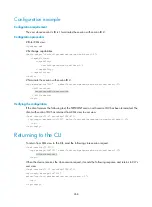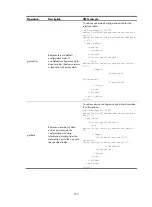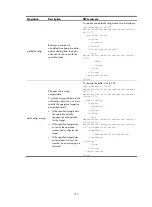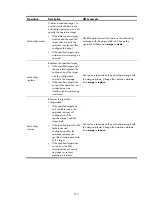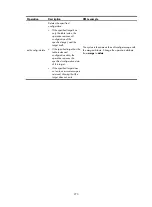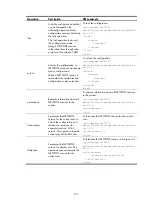
267
<?xml version="1.0" encoding="UTF-8"?>
<rpc message-id="101" xmlns="urn:ietf:params:xml:ns:netconf:base:1.0">
<get-sessions/>
</rpc>
If the client receives a message as follows, the operation is successful:
<?xml version="1.0" encoding="UTF-8"?>
<rpc-reply xmlns="urn:ietf:params:xml:ns:netconf:base:1.0" message-id="101">
<get-sessions>
<Session>
<SessionID>1</SessionID>
<Line>vty0</Line>
<UserName></UserName>
<Since>2011-01-05T00:24:57</Since>
<LockHeld>false</LockHeld>
</Session>
</get-sessions>
</rpc-reply>
The output shows the following information:
•
The session ID of an existing NETCONF session is 1.
•
The login user type is vty0.
•
The login time is 2011-01-05T00:24:57.
•
The user does not hold the lock of the configuration.
Terminating another NETCONF session
NETCONF allows one client to terminate the NETCONF session of another client. The client whose
session is terminated returns to user view.
# Copy the following message to the client to terminate the specified NETCONF session:
<rpc message-id="101" xmlns="urn:ietf:params:xml:ns:netconf:base:1.0">
<kill-session>
<session-id>
Specified session-ID
</session-id>
</kill-session>
</rpc>
After receiving the kill-session request, the device returns a response in the following format if the
kill-session operation is successful:
<?xml version="1.0" encoding="UTF-8"?>
<rpc-reply message-id="101"
xmlns="urn:ietf:params:xml:ns:netconf:base:1.0">
<ok/>
</rpc-reply>
Summary of Contents for 5920
Page 86: ...76 XGE1 0 2 N A P2P Two 0 ...
















